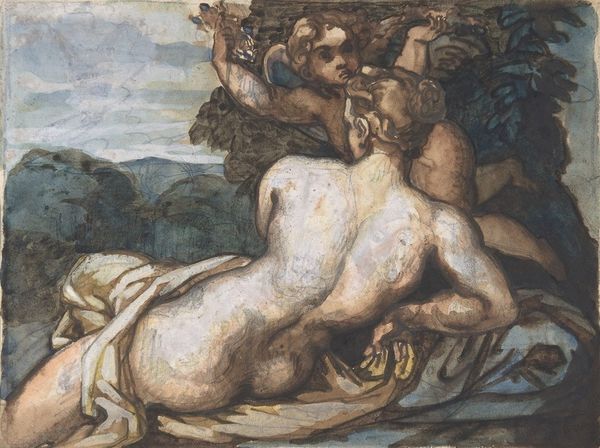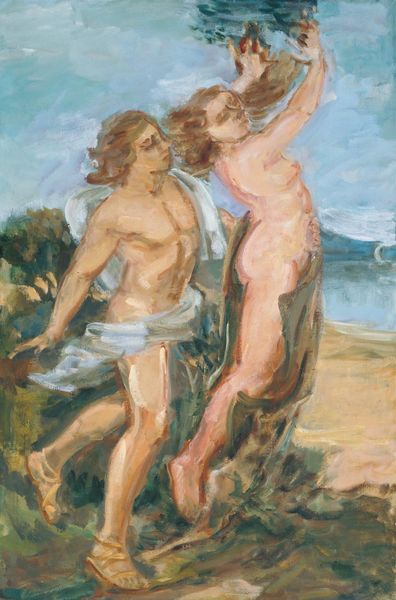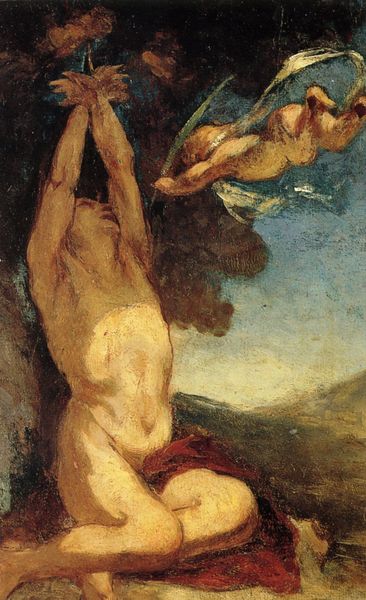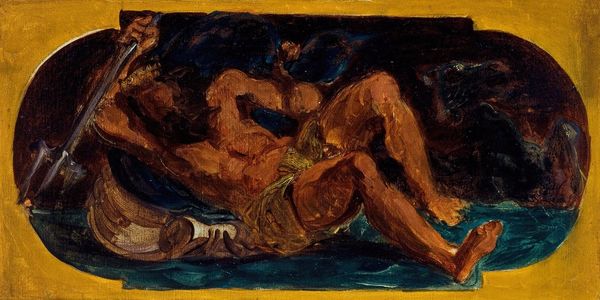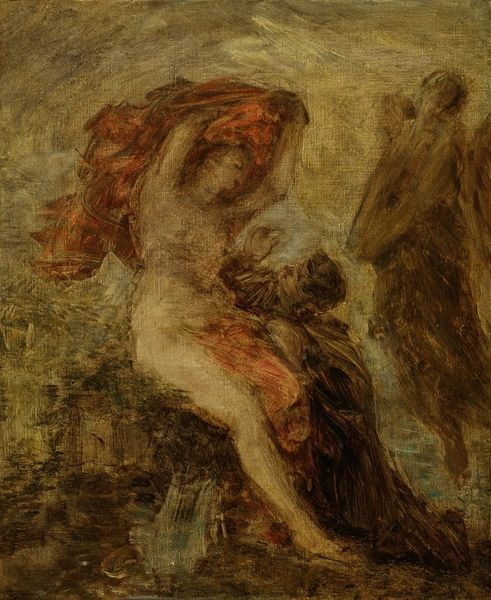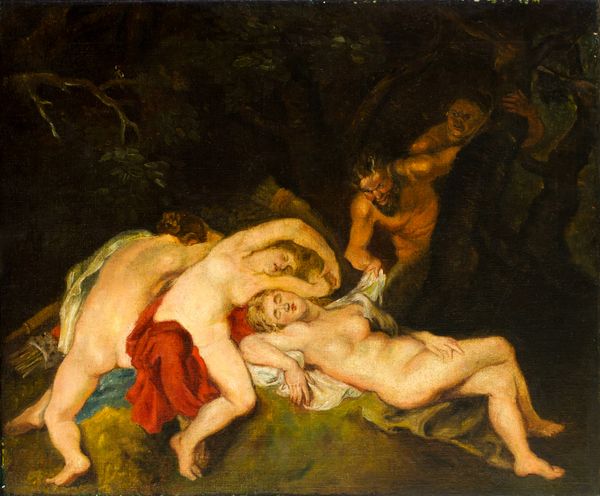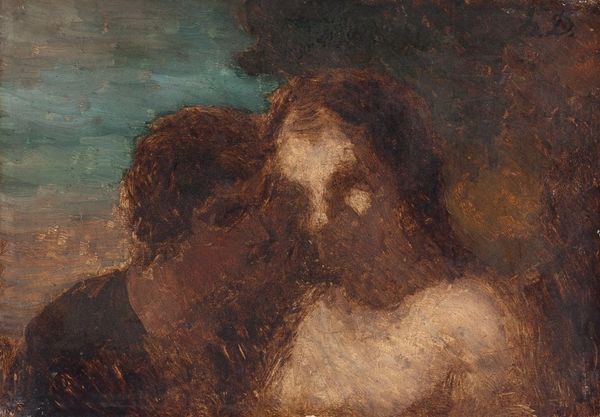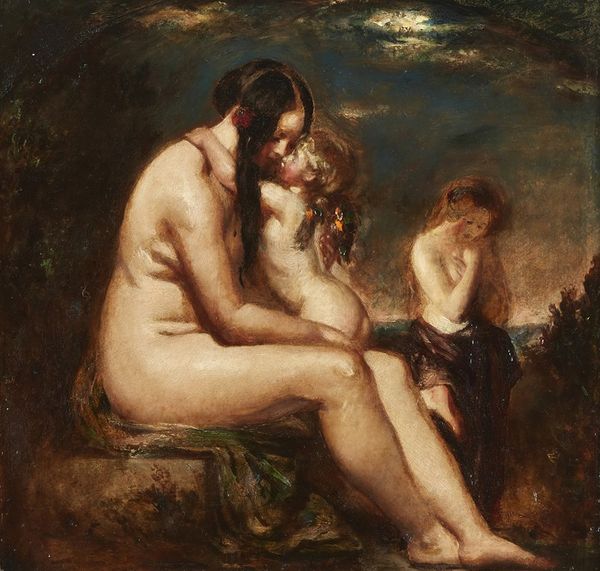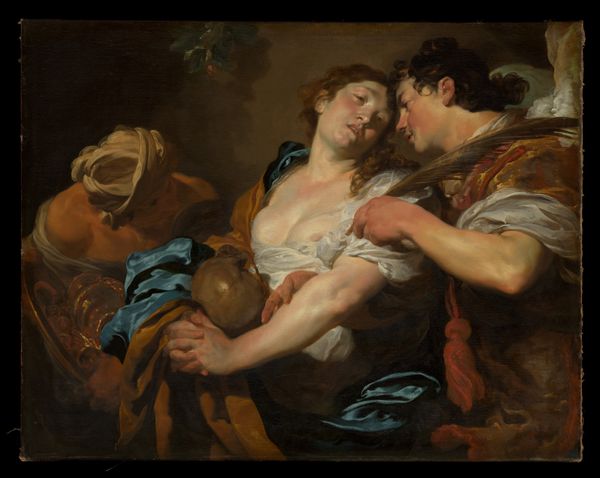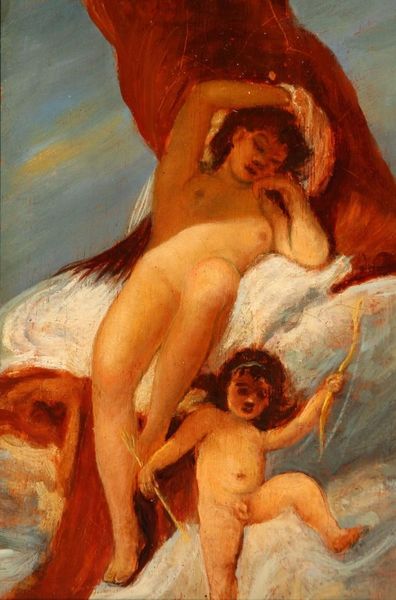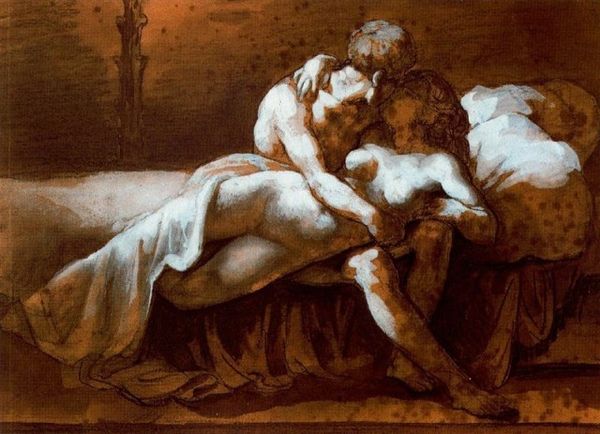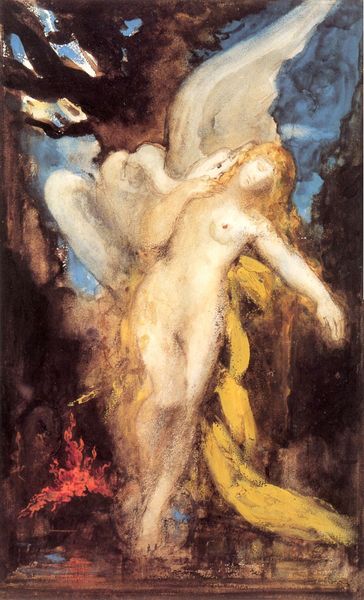
oil-paint
#
baroque
#
oil-paint
#
figuration
#
oil painting
#
romanticism
#
mythology
#
genre-painting
#
nude
#
portrait art
#
erotic-art
Copyright: Public Domain: Artvee
Curator: Immediately striking, isn't it? The composition throws us right into the throes of... something quite unsettling, perhaps. Editor: Yes, there’s a palpable tension. It almost feels theatrical, like a captured moment in a very dark play. There’s an anxiety about the eroticism on display that's hard to ignore. Curator: Precisely! What we are looking at here is entitled “Satyr Embracing A Nymph, After Peter-Paul Rubens" by Eugène Delacroix. Working primarily in oil, Delacroix recreates this rather dynamic scene that comes from the sphere of Greco-Roman mythology. Editor: The symbolism is definitely loaded. The satyr, a figure associated with unrestrained desire and the nymph, caught in his grasp, creates a powerful, yet ambiguous, tableau. Is it desire or threat? Curator: That ambiguity, I think, is precisely the point. Satyrs in art often embody primal urges, a link back to a more instinctual existence. The nymph embodies beauty and vulnerability, a polarity that creates the energy. But what are they truly after? Is the composition pointing to deeper rooted gender-relations, a darker power-play? Editor: Power definitely radiates here, perhaps the patriarchy? How it has shaped perceptions of female identity through history. Even the visual weight: The satyr is so dark, so clearly defined, compared to the nymph's almost luminous pallor. It is, as you mentioned, very unnerving to experience. Curator: The visual strategy isn't unique to the composition; it carries on through so many historical representations of the nude in classical contexts. Often, it feels as if beauty itself must be conquered or captured... an unfortunate legacy of the past playing out on the canvas. Editor: Well, Delacroix gives us quite a bit to grapple with there. Beyond the immediate spectacle, it triggers uncomfortable thoughts about gender dynamics, mythology's grip on our cultural psyche, and historical representations of both lust and power. It feels uncomfortably timeless. Curator: Absolutely, these works act as cultural mirrors, reflecting back to us our own entangled beliefs and leaving us to consider the legacy of classical art. Editor: And what a darkly fascinating reflection it makes.
Comments
No comments
Be the first to comment and join the conversation on the ultimate creative platform.
